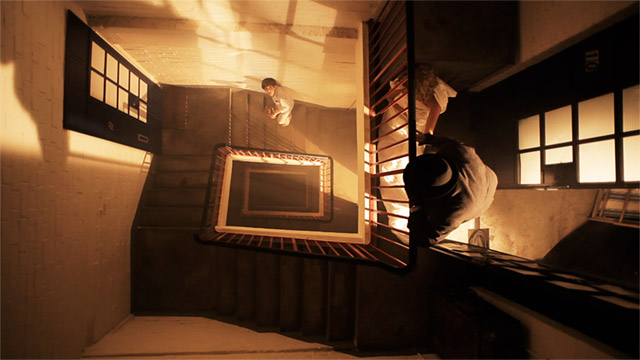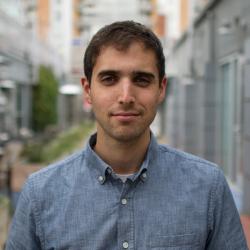The term “Hitchcockian” seems to get tossed around somewhat capriciously when describing cinematic thrillers. Yet, really, few actually live up to the tenants of the term. Well, director David Higgs’s The Last Ten bucks the trend. Utilizing a suffocating sense of mood combined with a claustrophobic location and impeccable production values, he crafts a thriller that would fit in right amongst ole’ Alfred’s much lauded canon. This is thirteen minutes of pure suspense—the kind of tension where you periodically need to look away from your laptop screen just because you need a break from the anxiety of it all.
Admittedly, The Last Ten isn’t going to win awards when it comes to plot. This is a story we’ve seen before: man finds out his wife is cheating. Things get bad. But, Higgs handles the familiar plot elements in such an ingeniously unique way. Told entirely with a single shot, the film slowly creeps from moment to moment until the inevitable, gripping climax. The single shot technique is complemented by stellar lighting work and even more impressive sound design. This is a film that yearns to be heard as much it needs to be watched.
Corresponding via e-mail, Higgs expanded upon the film’s creative process:
“The idea for The Last Ten came from a photograph I took of a stairwell in a residential building in Paris. Looking at that picture I wanted to tell a story, using only sound as much as possible, about what happens behind the closed doors of the apartments. Thats where the idea grew from and I built the story around that concept. As it began as a bit of an experiment I always knew that the impact was going to come from the way the story was being told, rather than the story itself.”
Now, let’s face it, if the hoopla over True Detective’s recent Herculean tracking shot is any indication, us cinephiles have a bit of a soft spot for long takes. So, as a film nerd, I just had to find out how Higgs pulled off such an impressive “oner” for his film. Higgs revealed that everything in the short was achieved practically on camera. As you might expect, this proved challenging. He shot the film in four sections, utilizing a motion controlled slider rigged vertically from the building’s rafters with a Canon 5d (behind the scenes picture). All the lighting was set up and fed to a desk so that it could be controlled and triggered on cue. Higgs comes from a background of lighting for theatre which came in very useful for this particular shoot.
Essentially, The Last Ten is a perfect bite-sized piece of suspense—as patiently crafted as it is thrilling. Be sure to look out for Higgs’s next short, Buoy, which already made it’s premiere at the London Short Film Festival in January of this year. The trailer can be found here. Also, follow him on twitter.
 Ivan Kander
Ivan Kander